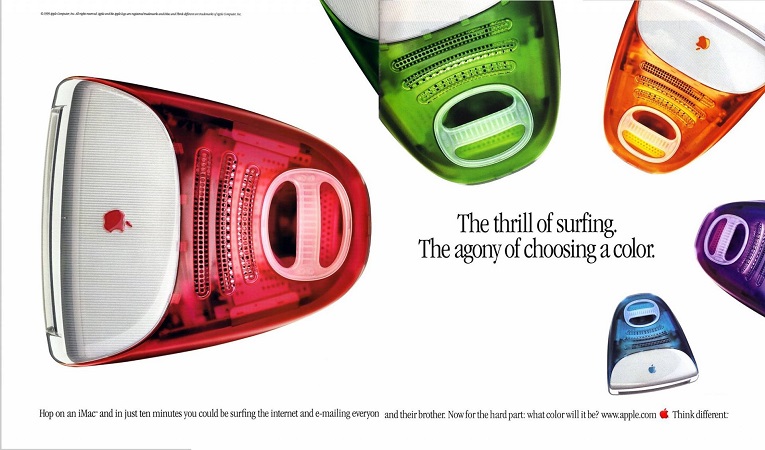
In the early 90s, Apple Inc. faced a dire financial crisis and dwindling market share, seemingly on the brink of collapse. Amidst this turbulent period, the introduction of the iMac in August 1998 emerged as a turning point that not only revitalized Apple but also set the stage for its future successes. By the mid-90s, Apple’s once dominant position in the personal computer market had eroded considerably. Fierce competition from Windows-based PCs and a lack of innovative products had led to declining sales, financial losses, and a strained relationship between the company’s leadership and its user base. As Apple faced the threat of bankruptcy, a radical shift was imperative to prevent its downfall. In 1997, Apple’s board of directors brought Steve Jobs back to the company he co-founded, placing him at the helm. Jobs quickly recognized that Apple’s product lineup was stale and lacked appeal. He set out to create a product that would redefine Apple’s image and reconnect with consumers. The result was the iMac, a groundbreaking all-in-one desktop computer.

The iMac’s design was a stark departure from traditional beige-box computers. Clad in translucent plastic and featuring vibrant colors, the iMac was a visual statement that resonated with users. Its iconic form factor eliminated the clutter of separate components, presenting a sleek and integrated device. This design innovation showcased Apple’s commitment to aesthetics and design, setting a new industry standard. One of Apple’s core principles has always been user-friendliness. The iMac embodied this ethos by simplifying the computing experience. Its “plug-and-play” functionality and seamless integration of hardware and software appealed to users who found conventional PCs complex and frustrating to set up. This emphasis on user experience endeared the iMac to a wide range of users. The iMac’s embrace of emerging technologies highlighted Apple’s forward-looking approach. Equipped with USB ports instead of legacy ports, the iMac spurred the adoption of USB peripherals. Furthermore, the iMac’s emphasis on Internet connectivity was pivotal at a time when the internet was becoming a central part of daily life. Apple’s inclusion of Ethernet and modem ports as well as software utilities for easy internet access reflected their anticipation of changing user needs.

Apple’s marketing strategy for the iMac was a masterstroke. The “Think Different” campaign emphasized Apple’s innovative spirit and encouraged users to embrace individuality. The memorable ads showcased influential figures from various domains and positioned the iMac as a tool for creativity and innovation. This campaign not only promoted the iMac but also redefined Apple’s brand image. The iMac’s introduction marked a turning point for Apple’s financial health. The iMac’s immediate popularity translated into increased sales and revenue. This influx of capital provided the company with a lifeline, allowing it to regain its financial stability and invest in future endeavors. The success of the iMac had far-reaching implications. It signaled a resurgence of Apple’s innovation and reaffirmed its position as a technology pioneer. The iMac’s design principles influenced subsequent Apple products, from iPods to iPhones, emphasizing clean lines, minimalism, and user-centered design. Furthermore, the iMac’s commercial triumph revitalized consumer interest in Apple, paving the way for later successes such as the iPod, iTunes, and the iPhone. By daring to be different, embracing design, prioritizing user experience, and leveraging effective marketing, Apple not only saved itself from impending doom but set in motion a chain of events that would shape the technological landscape for decades to come.














